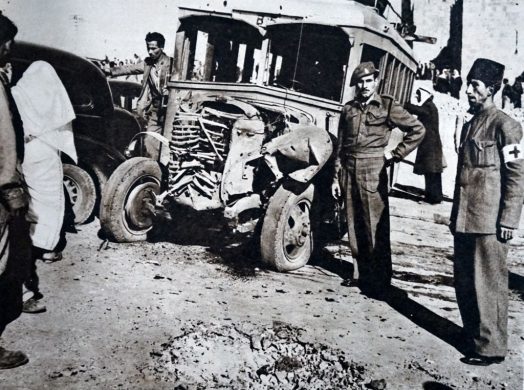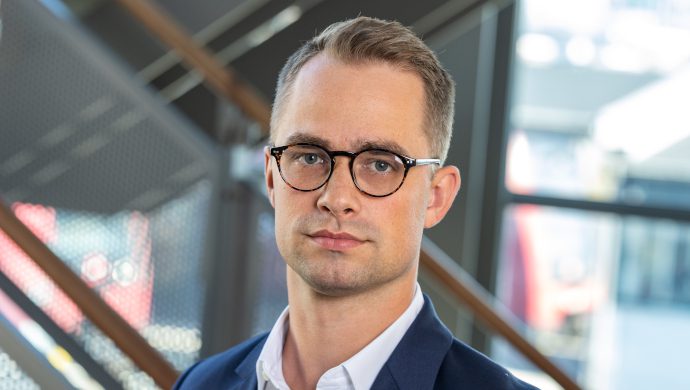Det fremgår af en opgørelse af Munich Re, som arbejder med naturkatastrofer og forsikringsløsninger.
Undersøgelsen er offentliggjort mandag.
Losses from natural catastrophes in 2015 were again lower than in the previous year.
The natural climate phenomenon El Niño reduced hurricane activity in the North Atlantic, while it brought major floods and heatwaves to many developing and emerging countries.
The deadliest catastrophe, and also the costliest in terms of overall losses, was the Nepal earthquake in April, where some 9,000 people lost their lives and overall losses totalled US$ 4.8bn.
“In terms of financial losses, we were somewhat fortunate in 2015: Strong tropical cyclones frequently only hit sparsely populated areas or did not make landfall at all”, explained Peter Höppe, Head of Munich Re's Geo Risks Research Unit, and added:
“In the North Atlantic, El Niño helped to curtail the development of heavy storms. Measures to reduce loss susceptibility have also had a positive effect”.
However, the comparatively low losses are no reason to become complacent:
“Scientists believe that in 2016 the strong El Niño phase might be followed by its twin sister, La Niña. Both versions of the climate oscillation ENSO (El Niño/Southern Oscillation) in the Pacific influence weather extremes throughout the world. A La Niña phase would promote the development of hurricanes in the North Atlantic, for example.”
The year at a glance
- 2015 saw the lowest losses of any year since 2009. Overall losses totalled US$ 90bn (previous year US$ 110bn), of which roughly US$ 27bn (US$ 31bn) was insured.
- The loss amounts were also below the long-term inflation-adjusted average for the period 1985–2014 (overall losses US$ 130bn, insured losses US$ 34bn).
- The natural catastrophes of the past year claimed 23,000 lives, substantially more than the previous year's figure of 7,700. However, the number of victims was still some way below the annual average for the last 30 years (54,000).
- For the first time, more than a thousand loss events were recorded in a single year. However, this is primarily due to improved communication of such events. In particularly benign years, a lot of minor events are recorded.
Nepals jordskælv var mest ødelæggende
The year's most devastating natural catastrophe was the earthquake in Nepal, which occurred on 25 April northwest of the capital Kathmandu and reached a magnitude of 7.8.
Nepal and the neighbouring states of India, China and Bangladesh are all highly exposed to earthquakes, as this is where the Indian and Eurasian continental plates meet.
The Indian plate moves about 4–5 cm north each year and pushes up the world's highest mountain range, the Himalayas, by about a centimetre each year. This is what causes these powerful earthquakes.
And that was also what happened just before midday on 25 April near the town of Gorkha.
The tectonic plates were displaced by up to four metres at a depth of 10–25 km. Countless buildings, including many historically important sites, were destroyed. Around 9,000 people were killed and 500,000 were made homeless.
Landslides occurred in the mountains to the north, which buried entire villages in the valleys.
It is believed that many more would have died if the earthquake had not struck at Saturday lunchtime. Some 6,000 school buildings throughout the country were either badly damaged or destroyed. Thankfully, there are no lessons on a Saturday.
Manglende forsikring for ødelæggelser
As is so often the case in developing countries, only a fraction of the US$ 4.8bn in overall losses caused by the quake and the aftershocks was insured (US$ 210m).
“Just like in Nepal, the proportion of insured losses for catastrophes in other developing and emerging countries remains very low”, explained Torsten Jeworrek, member of Munich Re’s Board of Management.
“The insurance industry is exploring new avenues to close this gap in cover and thus to help people better cope with material losses after a catastrophe.”
For example, Munich Re participates as a risk carrier in risk pools in the Caribbean (Caribbean Catastrophe Risk Insurance Facility, CCRIF), for Pacific island states (Pacific Catastrophe Risk Assessment & Finance Initiative, PCRAFI) and in Africa (African Risk Capacity, ARC).
These recently established pools offer covers throughout these regions for risks from weather catastrophes and also for earthquakes/tsunamis in some cases.
“These are pioneering solutions, especially as they also permit insurance for the countries that suffer most from the consequences of climate change, but have thus far not been able to organise cover”, added Jeworrek.
94% af ødelæggeser skyldes vejret
Some 94% of loss-relevant natural catastrophes in 2015 were weather-related events.
Particularly evident was the influence of the climate oscillation ENSO (El Niño/Southern Oscillation) in the Pacific, which influences weather extremes in many parts of the world.
Due to the strong El Niño phase, the number of 11 tropical cyclones in the North Atlantic was below the average for the warm phase which has been ongoing since 1995 (14.8).
Of these cyclones, only four reached hurricane strength (average 7.6). Overall and insured losses came to just a fraction of the average of previous years.
Man kan hente opgørelsen og læse resten af artiklen hos Munich Re på nedenstående link.















